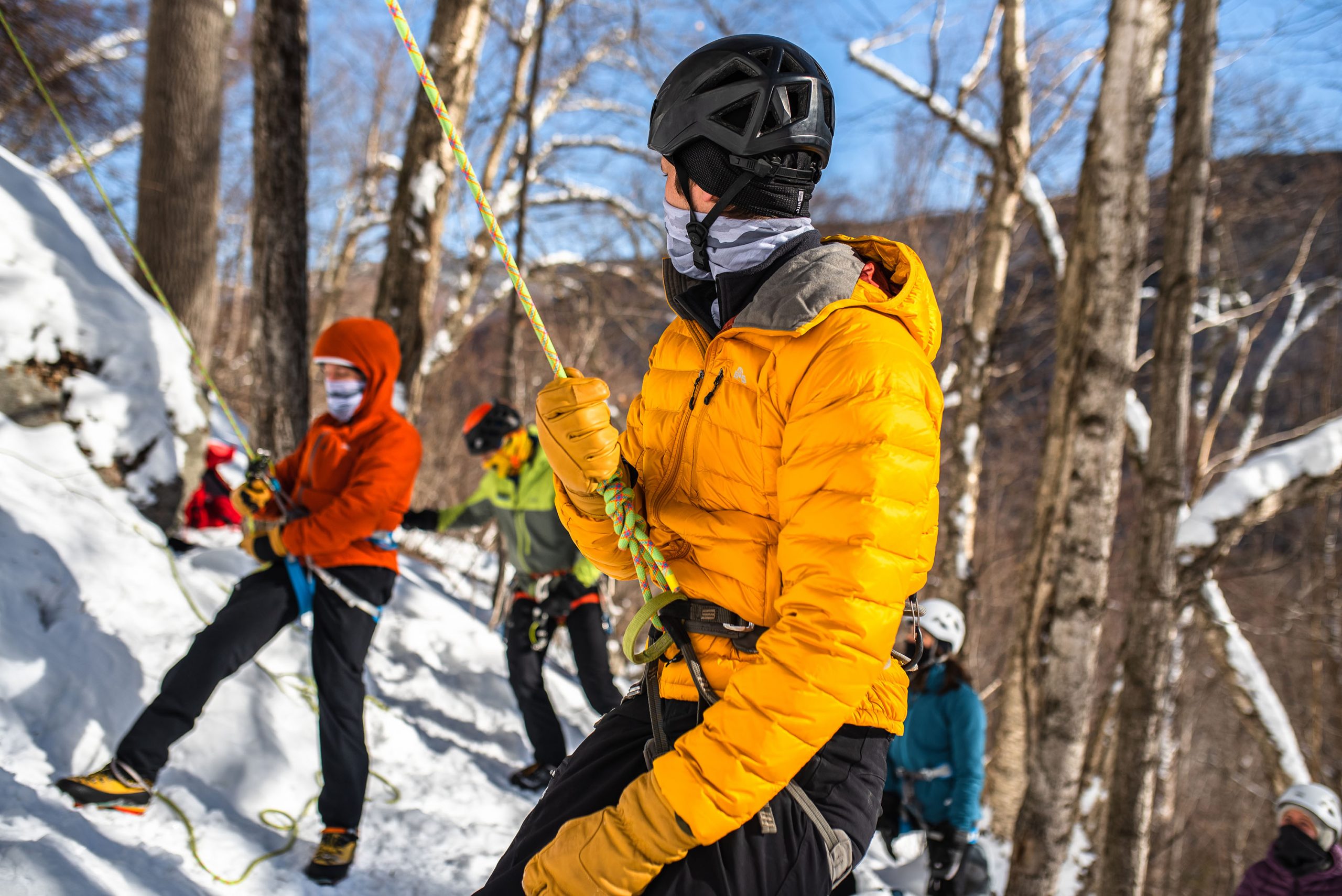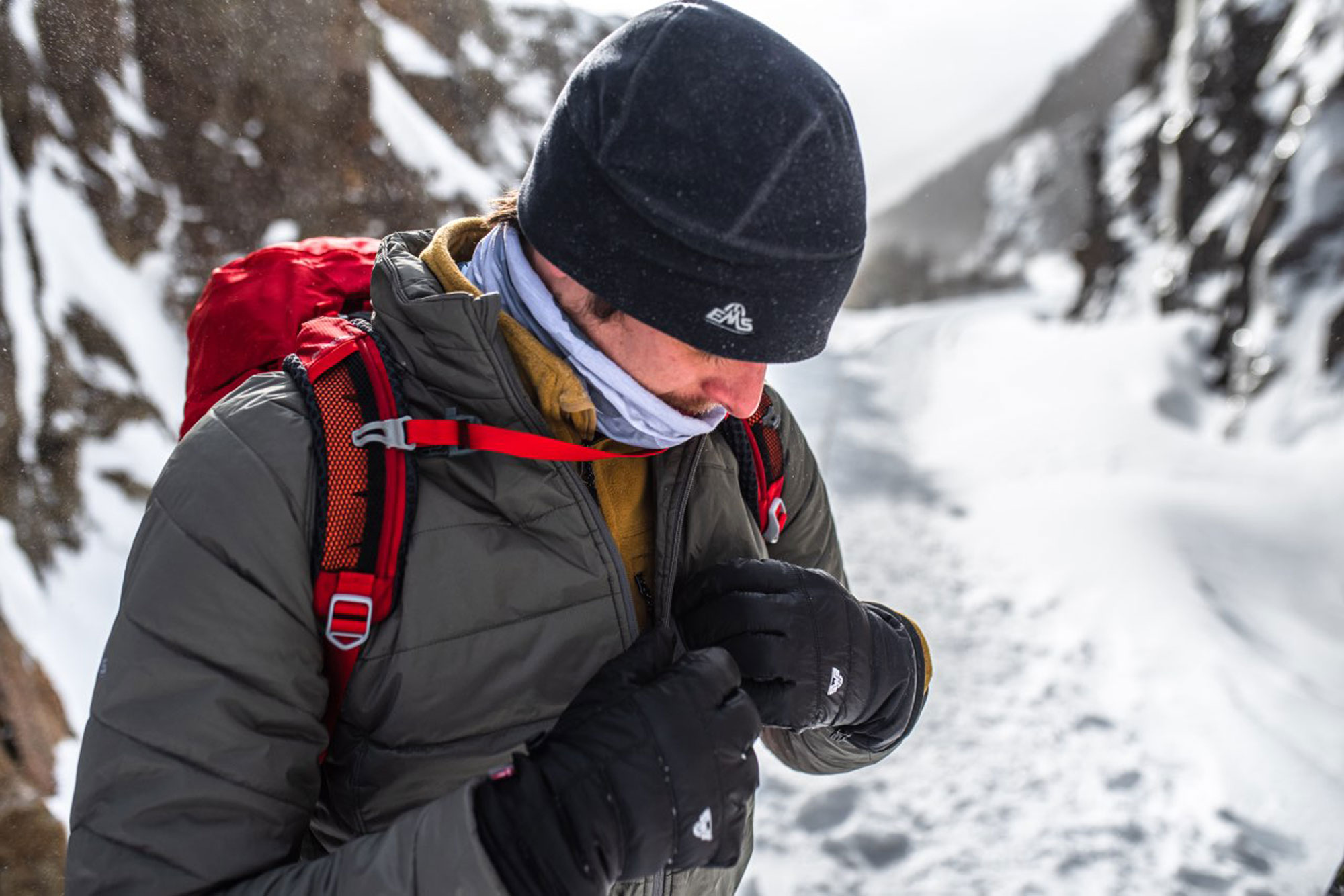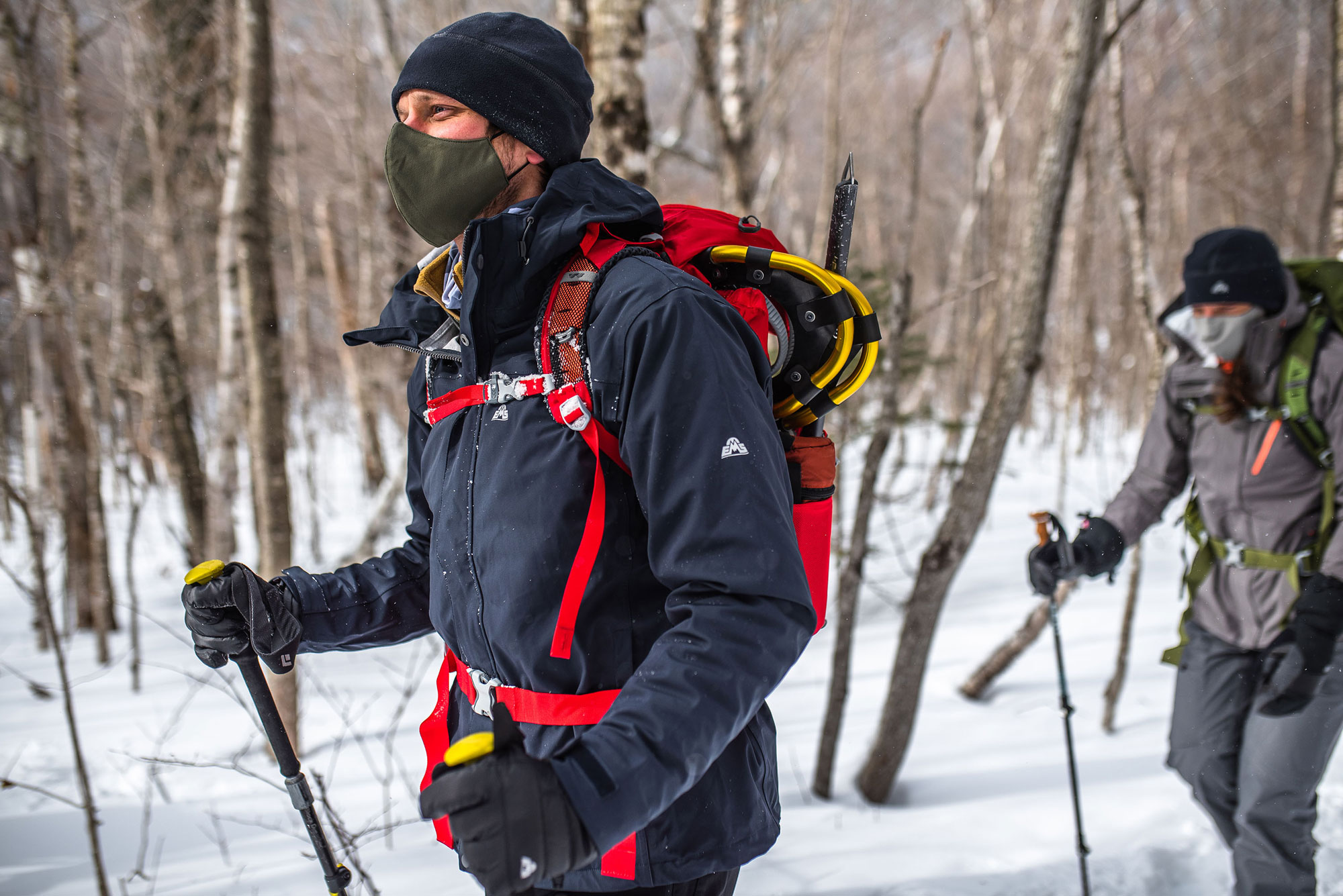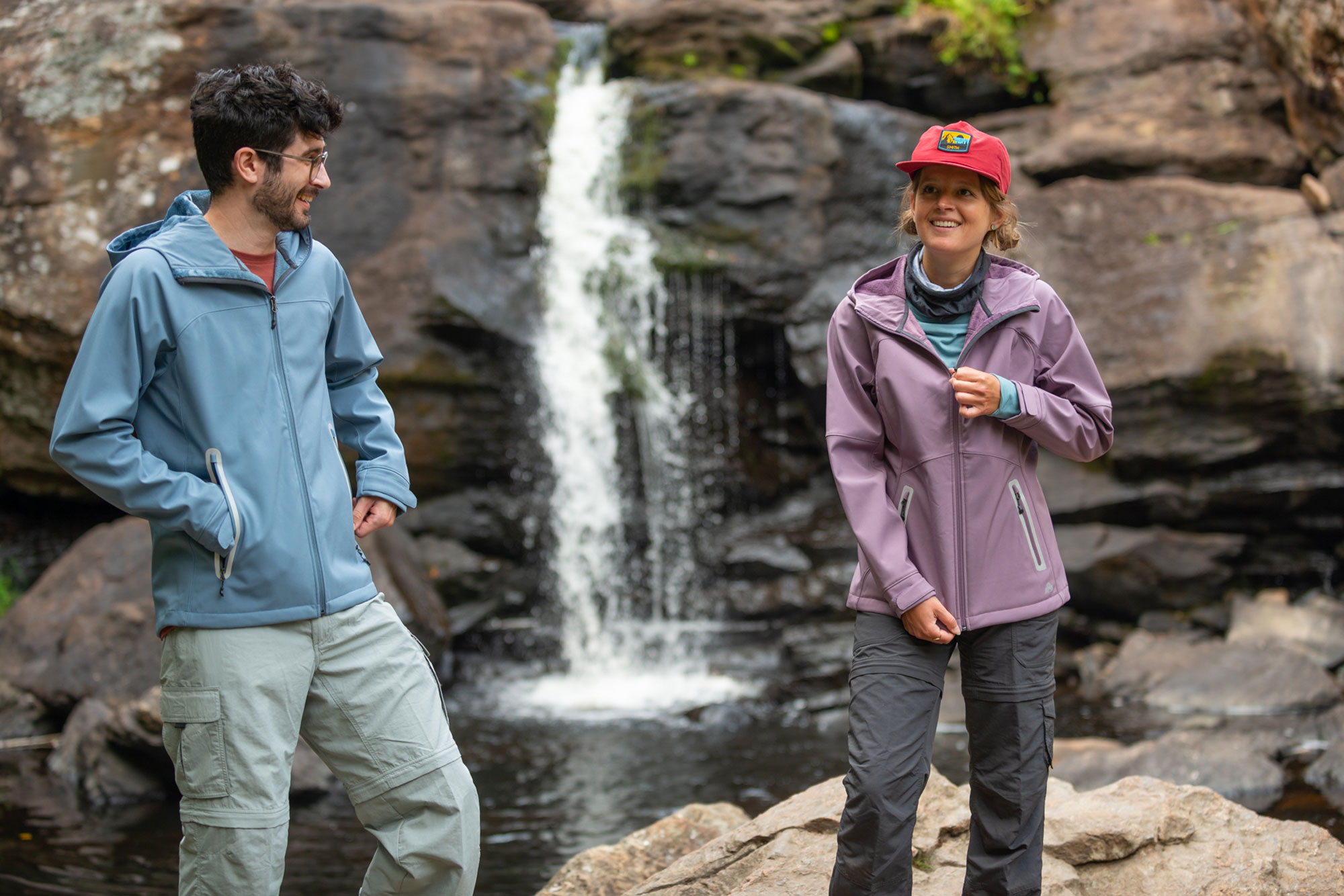Whether it’s to keep us dry, help us stay warm, fend off the wind, or shed snow, we ask a lot of our jackets—this is why so many hikers, climbers, and skiers are obsessed with them. On any given trip, our hiking packs likely contain three to four coats, which allows us to adjust for the ever-changing weather found in the mountains. There’s a difference between pulling a coat from your pack and grabbing the “right” coat from your pack, especially when Mother Nature rears her ugly head. Here’s how to dial your outer layer setup this winter.

Insulation
Down puffies like EMS’s Feather Pack and synthetic puffies such as the EMS Primapack offer exceptional warmth for their (very light) weight, making them incredibly versatile jackets to have in your quiver. The EMS Feather Pack and Primapack are favorites for cold-weather activities like winter hiking, backcountry skiing and snowboarding, ice climbing, and mountaineering. Since these jackets take up minimal space in your pack and provide exceptional warmth, they’re common additions to three-season hiking packs for chilly summits or to use in the event of an emergency. Walk any city street and you’ll notice that puffies like the Feather Pack and Primapack are extremely popular for everyday wear as well.
A word of caution: the thin nylon face fabric used on many lightweight puffies—including the Feather Pack and Primapack—can rip when exposed to sharp stuff like ice tools, ski edges, and tough branches. Consequently, they’re best worn under a hardshell or softshell during tear-prone activities such as tree skiing or when used near the sharp picks and points of ice tools and crampons.
Down Insulation: The Feather Pack
The Feather Pack’s down insulation provides unrivaled warmth-to-weight—down is, pound for pound, the world’s best insulator. The Feather Pack, and jackets like it, are popular with a broad spectrum of users who covet their superior warmth, minimal weight, and small size when packed. However, down is susceptible to moisture (like snow and rain), and while some jackets, like the Feather Pack, are made with hydrophobic down to improve water resistance, there are better options for wet-weather activities.
Best Use: Insulating jacket on cold, dry days when aerobic output is low and weight and space are at a premium.

Synthetic Insulation: The Prima Pack
Synthetic puffies like the EMS Primapack offer many of the same advantages as those of down puffies, namely, they’re light, packable, and warm. Synthetic insulation generally outperforms down in wet weather—it provides insulation even when wet and dries more quickly than its down counterparts. As a result, synthetic-insulation jackets, such as the EMS Primapack, are popular with those living in wet climates or participating in activities where moisture is inevitable. The downside of synthetic insulation is that it does not pack up quite as small as comparable down jackets.
Best Use: Daily driver on cold days and for outings where warmth is critical and the conditions are likely to be wet.

Active Insulation: The Vortex
Active insulation, like that used in the EMS Vortex, is a must-have for on-the-move athletes in cold-weather—think heading uphill while backcountry skiing, cross-country skiing, and fast-paced hikes. Active insulation is designed to breathe during high-exertion activities and move moisture from the inside to the outside, making it an awesome part of any layering system. Active insulation pieces like the Vortex work great on their own, but what allows the insulation to breathe also allows the wind to penetrate through it. Consequently, they’re best paired with an outer layer, such as under a hardshell or softshell, in windy conditions.
Best Use: Higher-output aerobic activity in cold weather like hiking, climbing, or backcountry skiing.

Hardshell: The NimbusFlex
Another key piece of the outerwear puzzle is a hardshell, such as the EMS NimbusFlex Rain Jacket. An outer layer like this has minimal insulating value itself but plays a critical role in your insulating system by keeping the elements (such as rain and snow) off the layers you’re wearing underneath. An added benefit of hardshells is that they do a great job blocking the wind.
Best Use: As an outer layer when it’s wet (resort skiing, ice climbing, hiking during a storm) or very windy (above-treeline travel).

Softshell: The Clipper
Bridging the gap between true insulating layers (like the Feather Pack, Primapack, and Vortex) and traditional hardshells, a softshell like the EMS Clipper is a great option for active pursuits. Typically worn over a base layer, the Clipper offers wind and water resistance in addition to providing some insulation. Breathable, stretchy, and rugged, you’ll see many folks wearing softshells while climbing, skiing, and hiking.
Best Use: Daily driver for aerobic activities on spring, fall, and mild winter days.

Three-in-One: The Nor’easter
Where a softshell molds the best features of a hardshell and insulation together, a three-in-one jacket like the EMS Nor’easter zips them together. These jackets feature a burly hardshell with an insulating layer zipped inside, giving you the option to wear just the hardshell over a baselayer on a warm-but-wet day, just the insulation (in the case of the Nor’easter, it’s a fleece) when you need warmth and breathability but no weather protection, or zip them together to make a burly do-it-all coat.
Best Use: Skiing (especially at a resort), cold and/or poor weather aerobic activities in deep winter.
Putting It All Together
The best jacket choice is often activity-dependent, and finding the right combination of layers for you involves many personal preferences. One common practice in the Northeast for hiking, backcountry skiing, and climbing is a base layer and softshell, with users donning a puffy (rest breaks, exposed ridgelines, and emergencies) and a hardshell (precip and high winds) at appropriate junctions. On colder days, consider swapping the softshell with an active insulator like the Vortex.
Tim Peck and Doug Martland
Tim and Doug met long ago at the Eastern Mountain Sports in Canton, Massachusetts. Bonding over a love of slick Quincy Quarry granite, White Mountain sufferfests, and scheming up adventures while folding tee-shirts, today Tim and Doug collaborate to write about their favorite outdoor activities and occasionally get nostalgic about tee-shirt tables.




